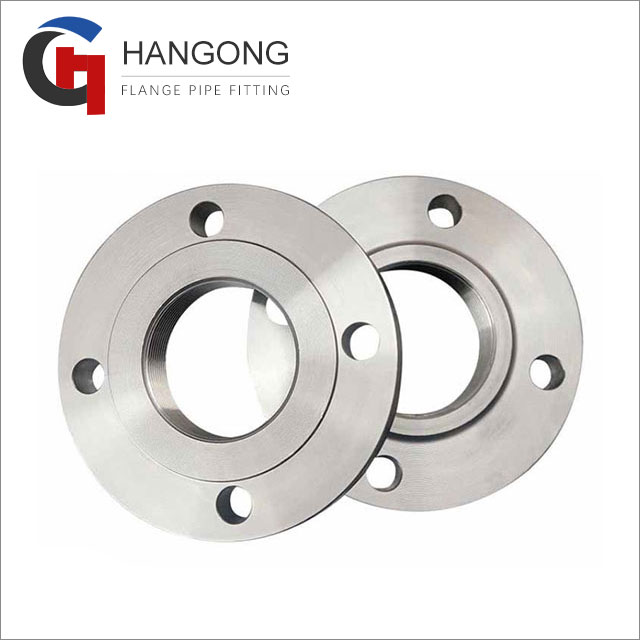Understanding Threaded Flanges: A Closer Look at Their Characteristics and Distinctions
2024-01-06
Introduction:
In the vast landscape of piping components, flanges play a crucial role in connecting pipes and facilitating the efficient flow of fluids or gases. Among the diverse array of flanges, threaded flanges stand out as a unique and versatile option. In this blog post, we'll explore what threaded flanges are, how they differ from other types of flanges, and the distinctive characteristics that make them suitable for specific applications.
What is a Threaded Flange?
A threaded flange is a type of flange designed with internal threads, allowing it to be screwed onto the external threads of pipes or fittings. This threading mechanism creates a secure and leak-resistant connection, eliminating the need for welding or additional sealing materials. Threaded flanges are commonly used in applications where ease of assembly and disassembly is essential, such as in low-pressure and non-critical piping systems.
Key Characteristics of Threaded Flanges:
1. Threaded Connection:
- Internal Threads: Threaded flanges have internal threads, allowing them to be directly screwed onto the external threads of pipes or fittings.
- Ease of Installation: The threaded connection simplifies the installation process, making it faster and more accessible compared to welding.
2. No Welding Required:
- Weld-Free Joints: Unlike welding flanges, threaded flanges do not require welding during installation, reducing the need for specialized skills and equipment.
- Cold Work Process: Threaded connections are considered a "cold work" process, eliminating the need for heat and minimizing the risk of thermal distortion.
3. Versatility:
- Adaptability: Threaded flanges are versatile and can be easily adapted to various pipe materials, including steel, stainless steel, and other alloys.
- Ease of Modification: Their adaptability allows for straightforward modifications and adjustments to the piping system without the need for extensive rework.
4. Applications:
- Low-Pressure Systems: Threaded flanges are commonly used in low-pressure piping systems where the simplicity of installation outweighs the need for high-pressure capabilities.
- Non-Critical Services: They are suitable for non-critical applications where factors like cost and ease of maintenance take precedence.
How Threaded Flanges Differ from Other Flange Types:
1. Welding vs. No Welding:
- Threaded Flanges: Do not require welding during installation, providing a simpler and faster assembly process.
- Weld Neck Flanges: Involve welding to connect the flange to the pipe, requiring skilled labor and additional time.
2. Sealing Mechanism:
- Threaded Flanges: Rely on the threaded connection itself for sealing, eliminating the need for additional gaskets or welding seals.
- Slip-On Flanges: Typically use gaskets for sealing purposes, requiring precise gasket selection and installation.
3. Pressure Ratings:
- Threaded Flanges: Suited for low-pressure applications due to the nature of the threaded connection.
- Weld Neck Flanges: Ideal for high-pressure systems, providing a robust and secure connection.
4. Material Compatibility:
- Threaded Flanges: Compatible with various pipe materials, allowing for flexibility in system design.
- Socket Weld Flanges: Limited to specific pipe materials due to the welding process.
Conclusion:
Threaded flanges offer a practical and efficient solution in piping systems, especially in applications where simplicity and ease of assembly are paramount. Their distinctive characteristics, including threaded connections, weld-free joints, versatility, and suitability for low-pressure systems, make them an excellent choice for specific scenarios. While other flange types may excel in high-pressure environments or critical services, the threaded flange stands out as a reliable and convenient option, contributing to the diversity of choices available in the world of piping components. As always, the selection of the appropriate flange type should be guided by the specific requirements and conditions of the intended application.



